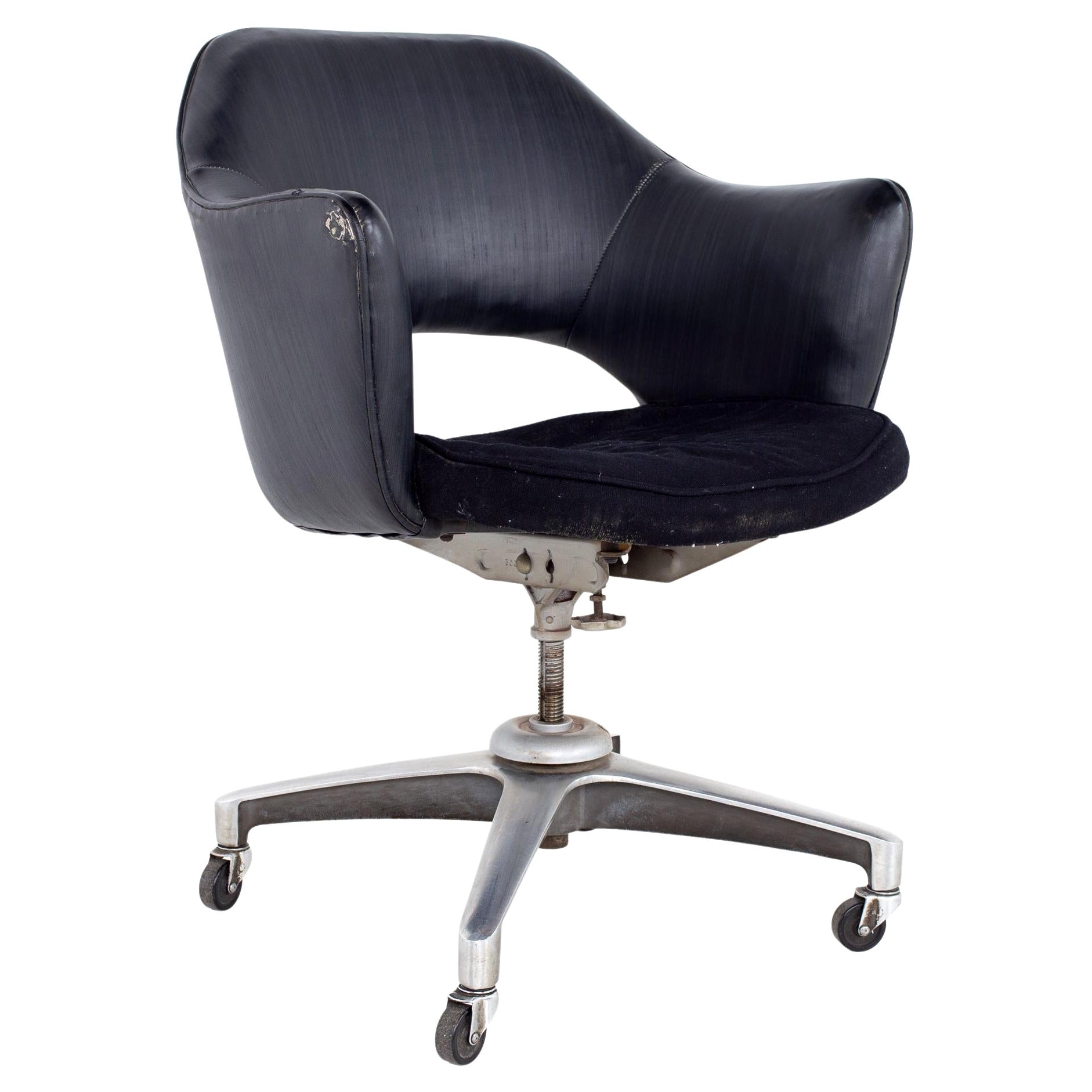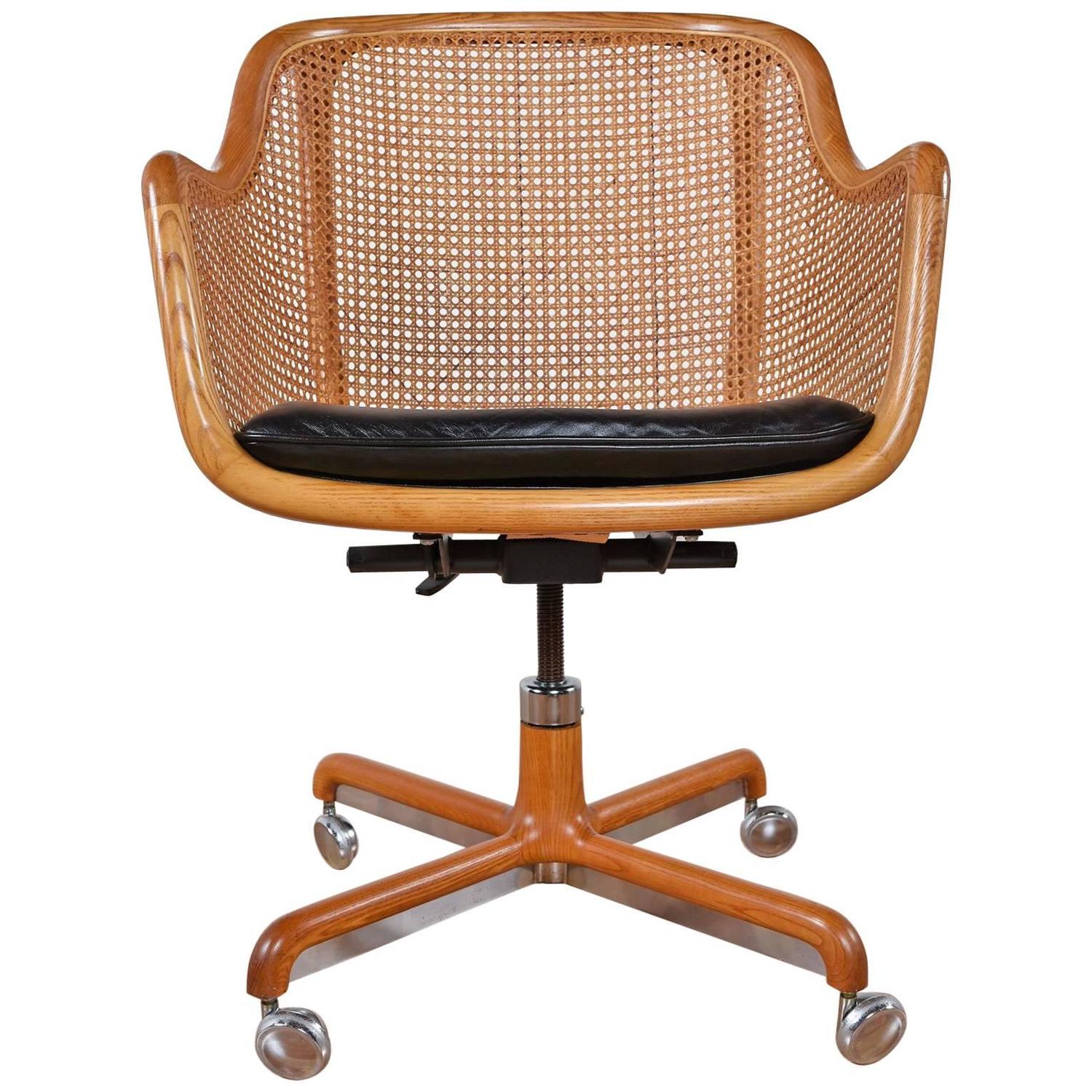Materials and Manufacturing of Mid-Century Modern Swivel Desk Chairs

Mid-century modern swivel desk chairs, icons of sleek design and functionality, were crafted using a careful selection of materials and innovative manufacturing techniques reflecting the era’s emphasis on both elegance and efficiency. The resulting chairs are prized today for their enduring style and often surprising durability.
The materials used in these chairs reflected a blend of readily available resources and a desire for clean, modern aesthetics. The combination of materials contributed significantly to both the chair’s visual appeal and its structural integrity.
Common Materials
The most prevalent materials included various hardwoods, carefully chosen for their strength and grain patterns; resilient upholstery fabrics that offered both comfort and style; and sturdy, often chrome-plated, steel for the swivel mechanisms and bases. Specific wood choices often reflected regional availability and cost, but walnut, teak, and mahogany were particularly favored for their rich tones and ability to take a fine polish. Upholstery ranged from durable leather and vinyl to more luxurious fabrics like wool and linen blends, chosen for their texture and color. The metal components, typically steel, were often chrome-plated for a gleaming, modern look, though other finishes, such as brass or painted steel, were also used depending on the manufacturer and specific design.
Manufacturing Processes
The creation of a mid-century modern swivel desk chair involved a series of precise steps, often employing a combination of traditional craftsmanship and emerging industrial techniques. The integration of these processes resulted in a product that balanced handcrafted detail with mass-production efficiency.
- Woodworking: Individual pieces of wood, precisely cut and shaped, were often joined using time-tested techniques like mortise and tenon joints or dowel construction. These methods ensured strength and durability, while allowing for the subtle curves and tapered legs characteristic of the style. Finishing techniques involved sanding, staining, and polishing to bring out the natural beauty of the wood. Some manufacturers incorporated plywood for certain components to reduce costs and weight, while still maintaining structural integrity.
- Metal Fabrication: The swivel base and other metal components were typically produced using techniques such as stamping, bending, and welding. Chrome plating was often applied to protect the steel from rust and corrosion, while also adding a distinctive shine. The precise engineering of the swivel mechanism ensured smooth and stable rotation.
- Upholstery: The upholstery process involved cutting and shaping the fabric to fit the chair’s form, followed by careful stitching and attachment to the underlying framework. Padding, often composed of foam rubber or similar materials, was strategically placed to provide comfort and support. The final upholstery work was a testament to skilled handwork, ensuring a clean, tailored finish.
- Assembly: The final stage involved the careful assembly of all the components – the wooden frame, the metal base, and the upholstered seat and back. This required precision and attention to detail to ensure the chair’s functionality and aesthetic appeal. Variations in assembly techniques might be seen between manufacturers, reflecting different approaches to efficiency and quality control.
Popularity, Influence, and Modern Interpretations of Mid-Century Modern Swivel Desk Chairs: Mid Century Modern Swivel Desk Chair

The enduring appeal of mid-century modern swivel desk chairs stems from a potent combination of factors: their elegant simplicity, ergonomic design, and the inherent versatility that allows them to seamlessly integrate into diverse interior styles, from classic mid-century modern settings to contemporary minimalist spaces. These chairs represent a time of optimism and innovative design, embodying a sophisticated yet approachable aesthetic that continues to resonate with modern sensibilities.
The clean lines, tapered legs, and often-featured upholstered seats of these chairs are hallmarks of mid-century modern design. Their functionality, designed for both comfort and efficiency, contributes significantly to their lasting popularity. They are more than just seating; they are statements of refined taste and enduring style.
Enduring Popularity of Mid-Century Modern Swivel Desk Chairs
The continued popularity of these chairs is a testament to their timeless design. Their enduring appeal arises from a confluence of factors: the inherent comfort provided by their ergonomic design, the adaptability of their style to various décor schemes, and the sense of quality and craftsmanship often associated with vintage examples. The sleek silhouettes and simple forms, free from unnecessary ornamentation, create a sense of sophisticated minimalism that remains highly sought after. Furthermore, the functionality of the swivel mechanism adds a touch of modern convenience that complements their timeless aesthetic. The use of high-quality materials, often including richly hued wood and durable upholstery, further enhances their longevity and appeal.
Influence on Contemporary Furniture Styles
Mid-century modern design, with its emphasis on clean lines, organic forms, and functional elegance, has profoundly impacted contemporary furniture trends. Its influence can be seen in the widespread adoption of tapered legs, minimalist silhouettes, and the integration of natural materials in contemporary furniture design. Many modern designers draw inspiration from the iconic shapes and simple elegance of mid-century pieces, updating them with new materials and manufacturing techniques. This approach allows for the creation of pieces that maintain the spirit of mid-century modernism while incorporating contemporary aesthetics and functionality.
Modern Interpretations of Classic Chairs, Mid century modern swivel desk chair
Several contemporary furniture brands have successfully reimagined classic mid-century modern swivel desk chairs. For instance, imagine a chair with a meticulously crafted walnut frame, its slender legs tapering gracefully to the floor, supporting a plush, charcoal grey upholstered seat. The swivel mechanism is smooth and silent, a testament to modern engineering seamlessly integrated into a classic design. This updated version might incorporate subtly updated ergonomic features, such as a slightly contoured backrest or adjustable height, while retaining the essential aesthetic elements of its mid-century predecessor. Another example could feature a vibrant, saturated teal upholstery on a sleek, powder-coated steel frame, a modern twist on the classic form, showcasing a bold color palette against a minimalist structure. These contemporary reinterpretations often use modern materials, like sustainably sourced wood or recycled aluminum, reflecting a commitment to both style and environmental consciousness. The resulting chairs retain the spirit of the originals while adapting to contemporary tastes and manufacturing capabilities.
